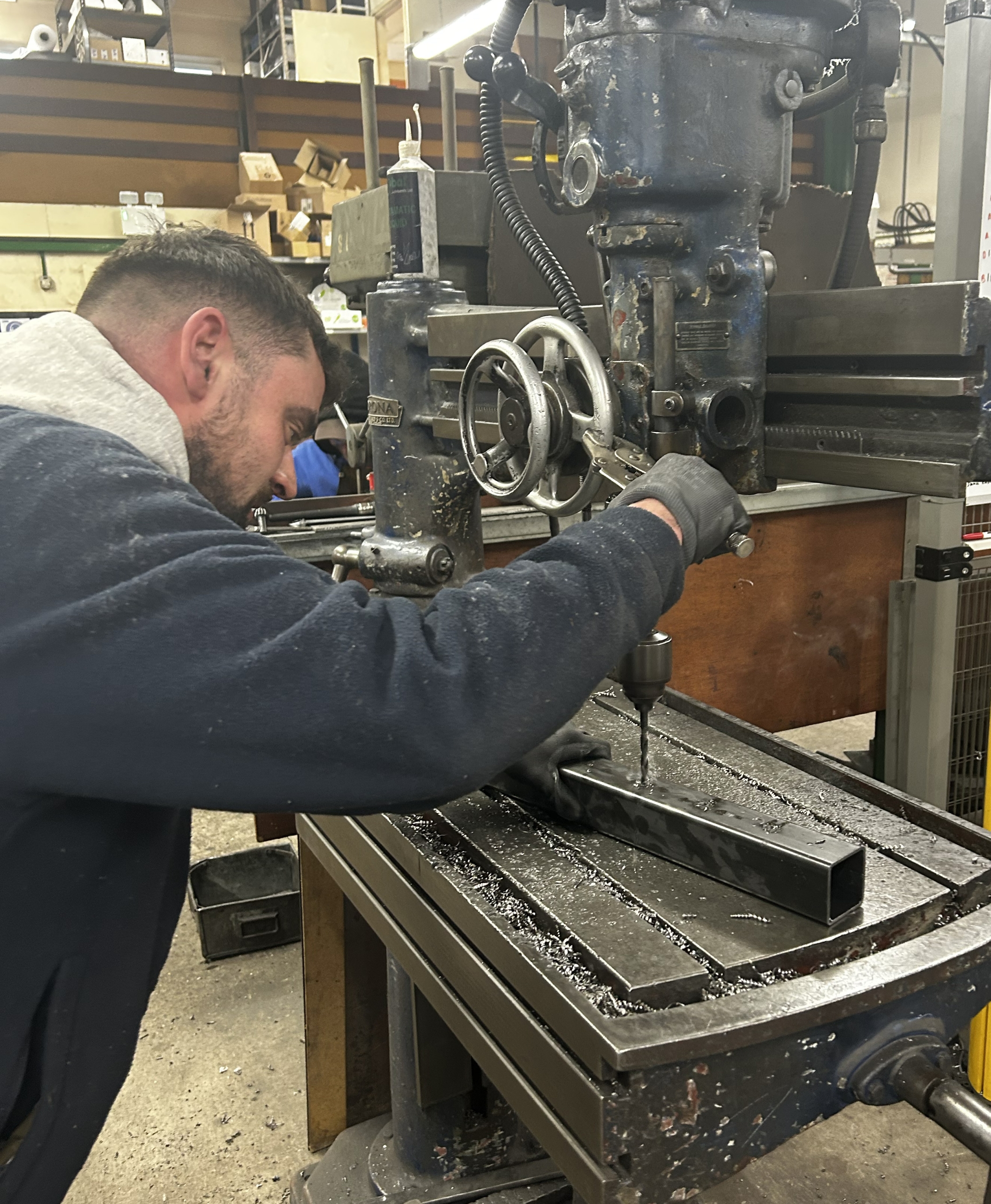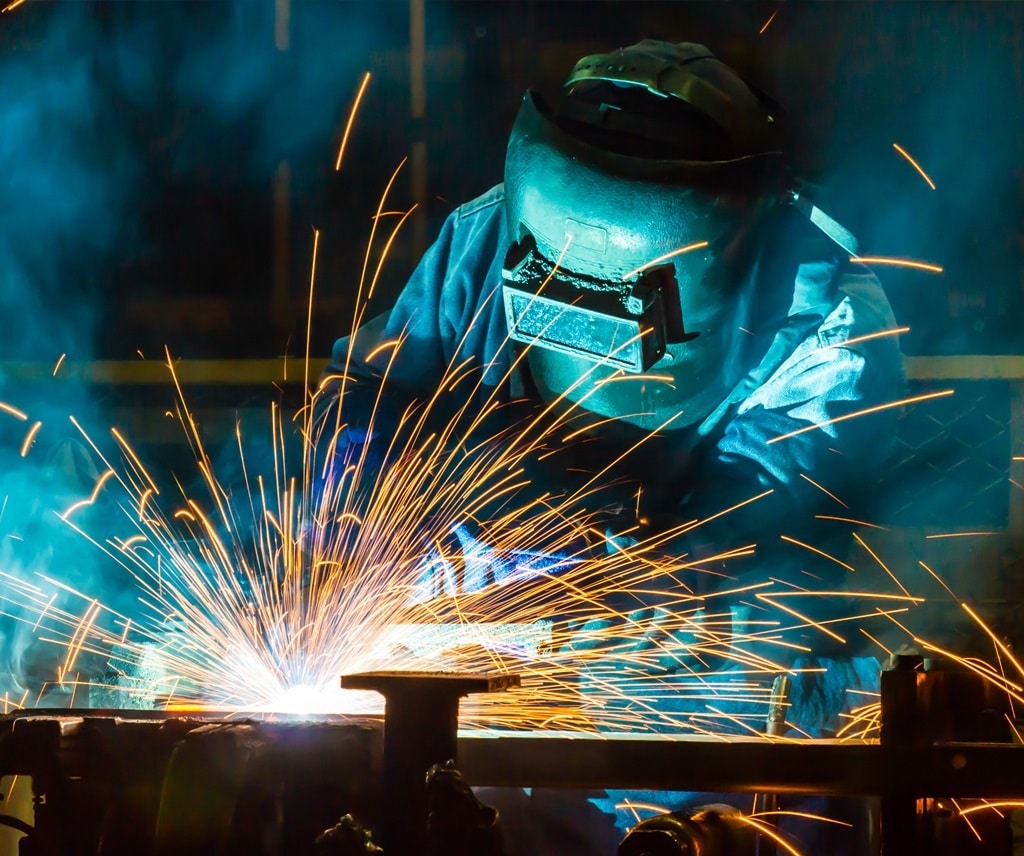Welcoming Andrew Wakeham to the MPL Family (MIG and TIG Welder)
As 2024 drew to a close, we were delighted to welcome Andrew Wakeham to the MPL Fabrications team! Andrew brings a wealth of expertise as a MIG and TIG welder and has extensive experience in the lift industry, making him a perfect fit for our growing business.
Andrew’s Background
Andrew’s journey in fabrication and welding began in 2008, when he embarked on a four-year college course to achieve his NVQ+VRQ Level 3 in Fabrication and Welding, mastering techniques across materials like mild steel, stainless steel, aluminium, and even titanium. Since then, he has built an impressive career across multiple industries, including construction, steel erection, and refrigeration maintenance.
Over the years, Andrew has taken on various leadership roles, such as being a Team Leader managing a skilled workshop of five, overseeing fabrication, welding applications, and on-site steel erection projects. His self-employed experience further expanded his skills in site fitting and in-house fabrication, ensuring he’s comfortable taking on both technical challenges and managerial responsibilities.
In addition to his technical expertise, Andrew’s versatility and licenses, including forklift truck, scissor lift, and cherry picker certifications make him an asset to our team. His problem-solving skills, attention to detail, and ability to handle complex projects align perfectly with MPL’s commitment to delivering excellence.
Andrew has already made an impact by contributing to our fabrication processes and ensuring projects are delivered with precision and efficiency. Whether it’s tackling specialised MIG and TIG welder tasks or working on bespoke lift-related fabrications, his dedication and passion shine through.
A Promising Future Together
As MPL Fabrications continues to grow, we’re confident that Andrew’s extensive experience and drive will play a vital role in our success. We look forward to seeing the amazing contributions he’ll make to our team and projects as we gear up for an exciting 2025.
Welcome aboard, Andrew – we’re thrilled to have you as part of the MPL family!
To find out more about our welding services and capacity please click here.

If you have any questions about our specialist welding services or want to discuss a specific project then please contact us on 024 7661 0778, or via email at sales@mplfabrications.com. Our expert engineers are ready and waiting to explain exactly how we could deliver the sheet metal components you need.
Pros & Cons
Pros:
Cons:
Variety of Processes to choose from:
There are many different processes that can be used to create a metal prototype, including CNC Machining, CNC Punching, Press Braking, Laser Cutting and more. Each process has different uses and can be implemented to create very accurate prototypes. For example, a CNC Machine can run the same job a few times with minimal changes from the initial product, allowing for consistent and quality production.
Requires skilled workers:
In order to carry out a solid prototyping process you will need in-house skills and capabilities. This doesn’t just extend to the workforce and departments needed, but also the equipment and the maintenance of that equipment, which could include Laser Cutters, 3D Printing, CNC Machining and much more. If you do not have these capabilities in-house it may be worth contacting a fabricator to outsource the work to.
Cheaper Alternatives:
If you’re working with a tight budget there are always cheaper options when it comes to materials and processes involved in prototyping. Aluminium is more commonly used in CNC prototyping due to being economically viable, lighter and easier to fabricate.
3D Printing can be expensive:
3D printing is suitable for prototypes that are purely for display; not having any moving parts, mechanical purpose or practical use. Results can be achieved quite quickly, although the options for materials are more limited if you’re on a tight budget, particularly when it comes to 3D Printing with metals.
Accurate visual and material representation:
CNC machining can be used to create prototypes that are visually similar to the final part. Machining centres and fabricators can make end-use parts as well as prototypes, so you can create prototypes that have similar functionality to the final product in some basic core aspects.
Not an accurate functional product representation:
There is a risk that your prototype might not accurately represent your product in terms of functionality. Some of the processes involved can only produce prototypes at a limited size, or in certain materials, so there’s a possibility that there will be some design flaws in the process. This is a rare problem, however.
MPL Fabrication’s prototyping capabilities

A precision-engineered prototype is often the most important part of a larger project. MPL Fabrications understand how precise a prototype has to be. With years of experience in sheet metal fabrication, they can advise on what is needed to take a concept to reality.
In-house work means that every stage of manufacturing a prototype is seamlessly integrated with every other stage, so the end result is delivered on budget and on time. Once the prototype is complete, the client can work with MPL Fabrications to refine it, correct any problems, and perfect the design. The same team works on a prototype from start to finish to ensure precision and consistent quality.
If you need complete prototyping services of any kind, then MPL Fabrications can discuss your requirements. Their years of experience and ability to be versatile means they can deliver a prototype with ease, for large scale industrial projects or small engineered solutions.
